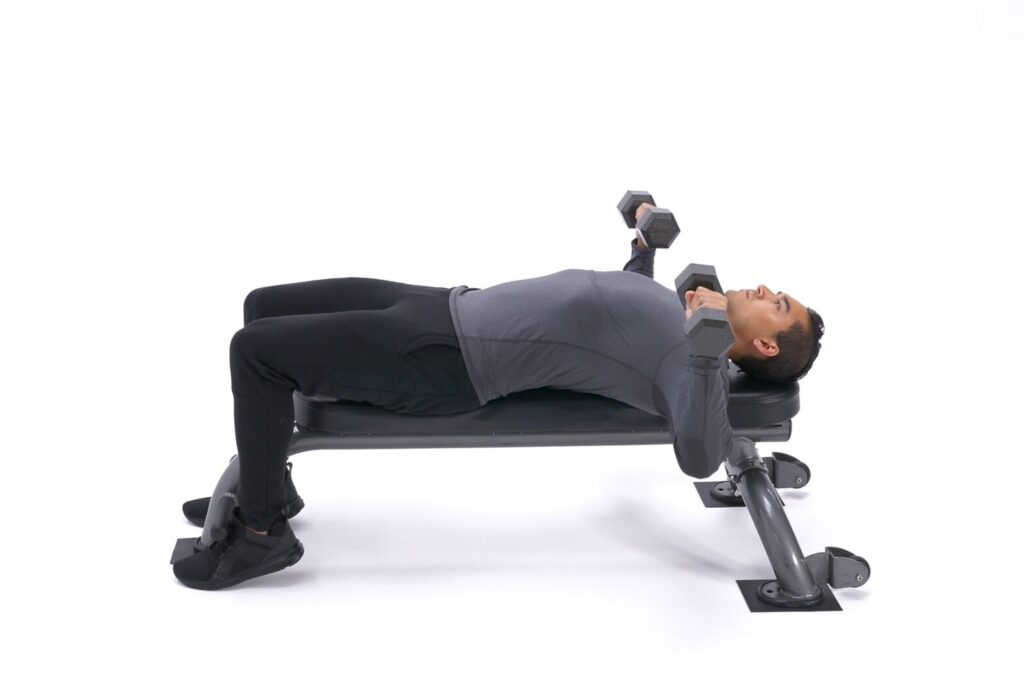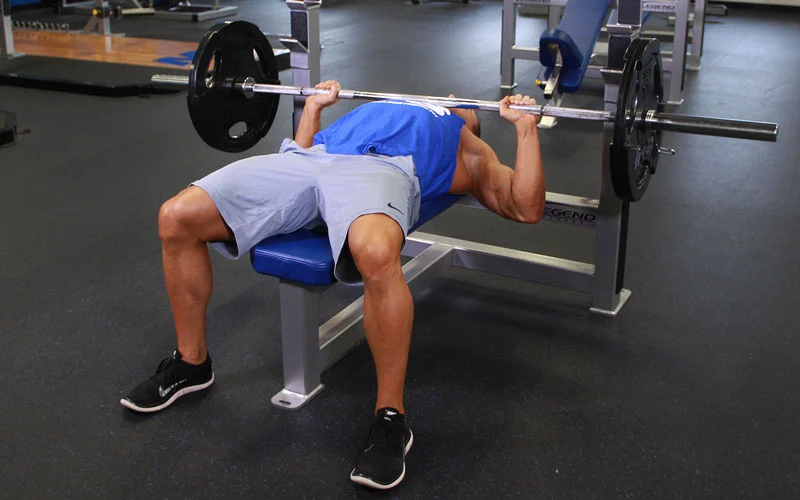All you need to know about different Bench Presse Variations
This is my 2nd favorite workout after deadlifts. This is a strength training compound exercise that primarily works the chest, triceps, and shoulders. There are several forms of bench press, including:
Barbell bench press: This is the most common form which is performed with a barbell.
Dumbbell bench press: Similar to the barbell variation but performed with dumbbells instead of a barbell.
Incline bench press: A variation, which is performed on an incline bench, which works the upper chest more.
Decline bench press: This variation is performed on a decline bench, which works the lower chest more.
Close-grip bench press: A variation, which is performed with hands close together on the bar, which emphasizes the triceps.
Machine bench press: A variation, which is performed on a weightlifting machine, typically using a sectorized weight stack.
Cable crossover bench press: This variation is performed using a cable machine, with the cables crossing each other in front of the body.
Each form can be beneficial for building strength and muscle in the chest, triceps, and shoulders. In addition to that these can be incorporated into a well-rounded strength training program. Now let’s deep dive into each of these to have a better picture.
1. Barbell bench press
To perform this, you need to lie down on a flat bench and holding a barbell with a grip slightly wider than shoulder-width apart. Then lower the bar towards the chest, before being pressed back up to the starting position.
You can perform this exercise with a variety of grip widths, barbells, and rep ranges. Thus, making it a versatile exercise which one can use to build strength, muscle size, and power. As with all weightlifting exercises, proper form and technique are important to reduce the risk of injury and get the most benefit from the exercise.

2. Dumbbell bench press

This is a strength training exercise similar to the barbell bench press but performed using dumbbells instead of a barbell.
To perform this variation, you need to lie down on a flat bench and holding a pair of dumbbells with a neutral grip. Then lower the dumbbell towards the chest and then press back up to the starting position.
It allows for a greater range of motion compared to the barbell alternate. Therefore, can help to improve muscular imbalances, as each arm must work independently.
3. Incline bench press
For this variation, you need an incline bench, typically set at an angle between 15 to 30 degrees. Lie on an incline bench with a barbell or dumbbells and lifting the weight overhead.
It works on the upper chest, triceps, and shoulders and is often used to add variety to a weightlifting routine. This exercise targets specific muscle groups. Compared to the flat bench press, the incline variation places a greater emphasis on the upper chest. In turn this can help to create a more aesthetically pleasing chest shape.

4. Decline bench press

The decline bench press is a variation, for which you need a decline bench, typically set at an angle between 10 to 25 degrees. Lie on the decline bench with a barbell or dumbbells and lifting the weight overhead.
It works on the lower chest, triceps, and shoulders and is often used to add variety to a weightlifting routine and target specific muscle groups. Compared to the flat bench alternate, this exercise places a greater emphasis on the lower chest. Having said that, it can help to create a more aesthetically pleasing chest shape.
5. Close-grip bench press
The close grip variation targets the triceps, shoulders, and chest muscles. In this exercise, you lie on a flat bench and grip the barbell with your hands positioned close together, typically shoulder-width or slightly narrower. Then slowly lower the to your chest and push back up to the starting position.
You can perform this exercise with a barbell or dumbbells, and it’s an effective way to add variety to your chest and triceps training routine. By using a close grip, you place more emphasis on the triceps, compared to the wider grip used in a traditional variation. This exercise can help increase upper body strength, build muscle mass, and improve overall athletic performance.

6. Machine bench press

This is also called as Smith Machine Bench press. Unlike the traditional barbell variation, you need to utilize the smith machine, which provides stability and support during the exercise.
In the machine form, you sit on a bench and adjust the machine to your height. You then place your hands on the handles and push the weight away from your chest, extending your arms. The machine controls the path of the weight, helping you to maintain proper form and reduce the risk of injury.
This is a good exercise for people who are new to strength training, as it provides a guided range of motion. Also, it can help you build up the stability and confidence to progress to more advanced exercises like the barbell version. Additionally, the machine variation can be a good option for those who have limitations in their shoulder or wrist, as it does not place as much stress on these joints as the barbell version.
7. Cable crossover bench press
To perform this exercise, you need a weight machine with two cable pulleys positioned high above the head, typically at a cable crossover station.
To perform this exercise, you lie on a flat bench positioned in the center of the cable crossover station. You then grasp the cable handles and pull the cables down and across your body. Which results in bringing your hands together in front of your chest. After a brief pause, you slowly release the cables back to the starting position, controlling the weight as you do so. This exercise targets the chest, triceps and shoulders.

The cable crossover is a variation of the traditional cable crossover exercise, and it provides a different type of resistance compared to barbell or dumbbell exercises. The continuous tension provided by the cables can help to activate the chest and triceps muscles more effectively, making it a great exercise for building strength and muscle mass in these areas. Additionally, this can be a good exercise for people with limited mobility, as it allows for a smooth, controlled movement pattern with less stress on the joints.
—–To find more about Workout and fitness – Click Here
Resources –
https://www.ncbi.nlm.nih.gov/pmc/articles/PMC7579505/
https://www.123helpme.com/essay/Bench-Press-Research-Paper-497422

